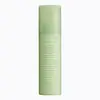What's inside
What's inside
 Key Ingredients
Key Ingredients

 Benefits
Benefits

 Concerns
Concerns

 Ingredients Side-by-side
Ingredients Side-by-side

Water
Skin ConditioningPolyquaternium-51
Skin ConditioningNiacinamide
SmoothingDiethoxyethyl Succinate
Solvent1,2-Hexanediol
Skin ConditioningCentella Asiatica Extract
CleansingPortulaca Oleracea Extract
Skin ConditioningRosmarinus Officinalis Leaf Extract
AntimicrobialChamomilla Recutita Extract
Skin ConditioningOyster Shell Extract
Sea Silt Extract
Skin ConditioningEcklonia Cava Extract
Skin ConditioningPearl Extract
AntioxidantUndaria Pinnatifida Extract
Skin ConditioningPlankton Extract
Skin ConditioningSoluble Collagen
HumectantPanthenol
Skin ConditioningOctyldodeceth-16
EmulsifyingChlorphenesin
AntimicrobialSodium Citrate
BufferingCitric Acid
BufferingAdenosine
Skin ConditioningMadecassoside
AntioxidantSea Water
HumectantCarrageenan
Hydrolyzed Collagen
EmollientButylene Glycol
HumectantArginine Ferulate
Skin ConditioningEthylhexylglycerin
Skin ConditioningWater, Polyquaternium-51, Niacinamide, Diethoxyethyl Succinate, 1,2-Hexanediol, Centella Asiatica Extract, Portulaca Oleracea Extract, Rosmarinus Officinalis Leaf Extract, Chamomilla Recutita Extract, Oyster Shell Extract, Sea Silt Extract, Ecklonia Cava Extract, Pearl Extract, Undaria Pinnatifida Extract, Plankton Extract, Soluble Collagen, Panthenol, Octyldodeceth-16, Chlorphenesin, Sodium Citrate, Citric Acid, Adenosine, Madecassoside, Sea Water, Carrageenan, Hydrolyzed Collagen, Butylene Glycol, Arginine Ferulate, Ethylhexylglycerin
Water
Skin ConditioningDipropylene Glycol
HumectantHouttuynia Cordata Extract
Skin ConditioningPentylene Glycol
Skin ConditioningTriethyl Citrate
MaskingChondrus Crispus Extract
Skin ConditioningXylitol
HumectantSaccharum Officinarum Extract
MoisturisingCedrus Atlantica Bark Oil
MaskingCynanchum Atratum Extract
Skin ConditioningRosmarinus Officinalis Leaf Oil
MaskingAlthaea Rosea Flower Extract
Skin ConditioningSalvia Sclarea Oil
MaskingAnthemis Nobilis Flower Oil
MaskingXylitylglucoside
HumectantPanthenol
Skin ConditioningBetaine
HumectantPolyglyceryl-2 Oleate
EmulsifyingGlycerin
HumectantDiphenyl Dimethicone
EmollientTriethylhexanoin
MaskingEthylhexylglycerin
Skin ConditioningDipotassium Glycyrrhizate
HumectantSodium Citrate
BufferingHydrogenated Lecithin
EmulsifyingButylene Glycol
Humectant1,2-Hexanediol
Skin ConditioningCitric Acid
BufferingTromethamine
BufferingTocopherol
AntioxidantAnhydroxylitol
HumectantCaprylic/Capric Triglyceride
MaskingGlucose
HumectantCeramide NP
Skin ConditioningCarbomer
Emulsion StabilisingWater, Dipropylene Glycol, Houttuynia Cordata Extract, Pentylene Glycol, Triethyl Citrate, Chondrus Crispus Extract, Xylitol, Saccharum Officinarum Extract, Cedrus Atlantica Bark Oil, Cynanchum Atratum Extract, Rosmarinus Officinalis Leaf Oil, Althaea Rosea Flower Extract, Salvia Sclarea Oil, Anthemis Nobilis Flower Oil, Xylitylglucoside, Panthenol, Betaine, Polyglyceryl-2 Oleate, Glycerin, Diphenyl Dimethicone, Triethylhexanoin, Ethylhexylglycerin, Dipotassium Glycyrrhizate, Sodium Citrate, Hydrogenated Lecithin, Butylene Glycol, 1,2-Hexanediol, Citric Acid, Tromethamine, Tocopherol, Anhydroxylitol, Caprylic/Capric Triglyceride, Glucose, Ceramide NP, Carbomer
 Reviews
Reviews

Ingredients Explained
These ingredients are found in both products.
Ingredients higher up in an ingredient list are typically present in a larger amount.
1,2-Hexanediol is a synthetic liquid and another multi-functional powerhouse.
It is a:
- Humectant, drawing moisture into the skin
- Emollient, helping to soften skin
- Solvent, dispersing and stabilizing formulas
- Preservative booster, enhancing the antimicrobial activity of other preservatives
Butylene Glycol (or BG) is used within cosmetic products for a few different reasons:
Overall, Butylene Glycol is a safe and well-rounded ingredient that works well with other ingredients.
Though this ingredient works well with most skin types, some people with sensitive skin may experience a reaction such as allergic rashes, closed comedones, or itchiness.
Learn more about Butylene GlycolCitric Acid is an alpha hydroxy acid (AHA) naturally found in citrus fruits like oranges, lemons, and limes.
Like other AHAs, citric acid can exfoliate skin by breaking down the bonds that hold dead skin cells together. This helps reveal smoother and brighter skin underneath.
However, this exfoliating effect only happens at high concentrations (20%) which can be hard to find in cosmetic products.
Due to this, citric acid is usually included in small amounts as a pH adjuster. This helps keep products slightly more acidic and compatible with skin's natural pH.
In skincare formulas, citric acid can:
While it can provide some skin benefits, research shows lactic acid and glycolic acid are generally more effective and less irritating exfoliants.
Most citric acid used in skincare today is made by fermenting sugars (usually from molasses). This synthetic version is identical to the natural citrus form but easier to stabilize and use in formulations.
Read more about some other popular AHA's here:
Learn more about Citric AcidEthylhexylglycerin (we can't pronounce this either) is commonly used as a preservative and skin softener. It is derived from glyceryl.
You might see Ethylhexylglycerin often paired with other preservatives such as phenoxyethanol. Ethylhexylglycerin has been found to increase the effectiveness of these other preservatives.
Panthenol is a common ingredient that helps hydrate and soothe the skin. It is found naturally in our skin and hair.
There are two forms of panthenol: D and L.
D-panthenol is also known as dexpanthenol. Most cosmetics use dexpanthenol or a mixture of D and L-panthenol.
Panthenol is famous due to its ability to go deeper into the skin's layers. Using this ingredient has numerous pros (and no cons):
Like hyaluronic acid, panthenol is a humectant. Humectants are able to bind and hold large amounts of water to keep skin hydrated.
This ingredient works well for wound healing. It works by increasing tissue in the wound and helps close open wounds.
Once oxidized, panthenol converts to pantothenic acid. Panthothenic acid is found in all living cells.
This ingredient is also referred to as pro-vitamin B5.
Learn more about PanthenolSodium Citrate is the sodium salts of citric acid. In skincare, it is used to alter pH levels and acts as a preservative.
Its main functions are to maintain the pH of a product and neutralize metal ions.
The acidity of our skin is maintained by our glands and skin biome; normal pH level of skin is slightly acidic (~4.75-5.5).
Being slightly acidic allows our skin to create an "acid mantle". This acid mantle is a thin barrier that protects our skin from bacteria and contaminants.
Learn more about Sodium CitrateWater. It's the most common cosmetic ingredient of all. You'll usually see it at the top of ingredient lists, meaning that it makes up the largest part of the product.
So why is it so popular? Water most often acts as a solvent - this means that it helps dissolve other ingredients into the formulation.
You'll also recognize water as that liquid we all need to stay alive. If you see this, drink a glass of water. Stay hydrated!
Learn more about Water